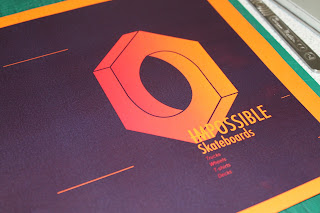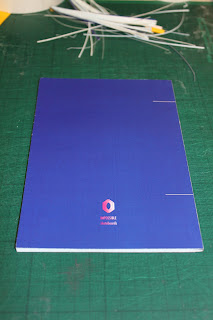1. What skills have you developed through
this module and how effectively do you think you have applied them?
Throughout this module I think I’ve developed in my
ability to use colour within my design work, applying everything we’ve learnt
about production for print fairly effectively in order to achieve some
interesting results. I think I have also benefited from the type sessions, the
skills from which I have been able to apply to any typographic layouts
throughout this module. I think this will prove invaluable as I progress
further into the course. Finally, the main thing I can take away from this
module is a much greater appreciation for commercial print, both in the
preparation of the design for print and in the processes themselves. Another
skill I feel will prove invaluable moving forward.
2. What approaches to/methods of print production have you developed and how have they informed your design development process?
I think throughout this module I have had much more of
an appreciation for the print production processes that I want to apply to my outcomes.
Despite a lot of them not being available in college I was able to propose what
I wanted and think about visuals before actually printing.Working with ideas
on screen allowed me to be more creative when thinking about the resulting
outcomes.
3. What strengths can you identify in your work and how have/will you capitalise on these?
I think the main strength I can identify in my work for
this module is visual consistency, and in branding this is very useful. I have
been pleased with the majority of the artwork I’ve created and in how it has
come together to make a whole body of products for the main brief. I think I
can capitalise on this for any brief as it is usually important to have
consistent visuals for a single body of design.
|
4. What weaknesses can you identify in your work and how will you address these in the future?
I think the main weakness I can identify through this module is hand rendered work and my ability to work at a consistent pace throughout. I find that my motivation is unevenly spread throughout the module and seems to come into play towards the end of the module when the pressure is on. If I were working at a more consistent rate, giving myself daily goals to work towards I think I’d more likely get a more rounded body of work.
I think the main weakness I can identify through this module is hand rendered work and my ability to work at a consistent pace throughout. I find that my motivation is unevenly spread throughout the module and seems to come into play towards the end of the module when the pressure is on. If I were working at a more consistent rate, giving myself daily goals to work towards I think I’d more likely get a more rounded body of work.
5. Identify 5 things that you will do differently next time and what you expect to gain from doing these.
-
Try to stay
motivated throughout the brief by setting myself regular goals and things to
achieve in a restricted time. This will make me get on with the work earlier as
I find that when I write to do lists I have more motivation.
-
Try to be
decisive in the early stages to save myself from falling behind whilst deciding
on concept.
-
Try to blog
as soon as I do things in order to prevent work from piling up towards the end
of the module when I could and should be getting on with more important
elements of a brief.
-
Plan ahead
in order to allow myself time to produce what I want to, for example preparing
my screen earlier in screen print so that if anything should go wrong with it,
it isn’t the day before the module hand in…
-
Use research
more effectively in order to gain more extensive knowledge of printing
processes and also processes available around college. This will allow me to plan
my time better in order to fit in the processes I want, think before the
production in order to book inductions/get drop-in when using college
resources.
6. How would you grade yourself on the following areas ?
Attendance 5
Punctuality 5
motivation 3
commitment 4
quantity of work produced 3
quality of work produced 3
contribution to the group 4





































































